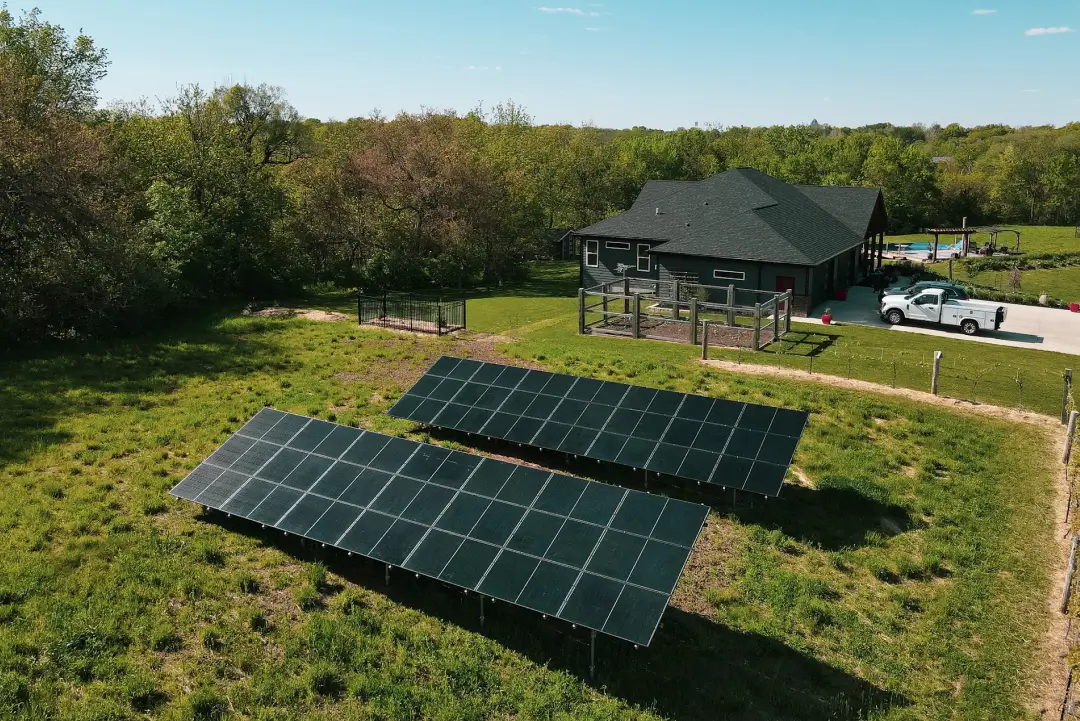Did you know that the choices you make daily can affect the climate? Everything from driving your car to what you have for dinner make up what is known as a carbon footprint.
In 2019, United States residents emitted over 5,000,000,000 metric tons of CO2, according to some of the most recent data by the U.S. Energy Information Administration. Fortunately, there are easy things you can do to help reduce CO2 emissions. Awareness is the first step, and we’re here to help you learn more and put that knowledge into action.
Kick back and get ready to learn about what your carbon footprint is, how to calculate it, and some simple changes you can make to start reducing your carbon footprint right away!
What is a Carbon Footprint?
The phrase “carbon footprint” has an odd ring to it. We all know what a footprint is, but a carbon footprint can be a bit more confusing.
How many times have you been to the beach and seen the prints left by others in the sand? Similar to how when you walk along the beach you make an imprint with your foot on the sand, the choices you make in your daily life make an impact on the atmosphere.
This impact is your carbon footprint.
In simplest terms, any carbon footprint is the total amount of carbon dioxide (CO2) emitted over time by an entity, such as a person, event, organization, service, or building location.
Burning fossil fuels for energy (like in a coal stove or a gas engine), cutting downs trees, the production and transportation of food, manufacturing materials for everything from what we wear to use in our homes, paving roads, construction and running of buildings, transportation, and so much else we take for granted in our daily lives can all lead to the release of greenhouse gases such as carbon dioxide and methane.
In the next few paragraphs you may notice we use a variety of phrases such as carbon emissions, greenhouse gases, and CO2. To help clear up any confusion, these terms all refer to the release of emissions that can harm our environment and impact the climate.
What is Carbon or CO2?
Before we dive in, let’s take a quick look at the science that helps us understand the impact of CO2 on our climate.
CO2 in the atmosphere absorbs sunlight and traps heat creating an invisible “bubble” of heat. At face value, this seems like a good thing. After all wooly mammoths are awesome lived during the last ice age, but I wouldn’t want to live with one as a neighbor.
The issue with each of us having carbon footprints that have an outsized impact is that carbon that used to be held in places like the ground, in plants, and otherwise kept out of the atmosphere is now being released into the atmosphere.
This means that the carbon can trap more heat, and that globally temperatures are rising.
As a result, weather patterns are disrupted, which many of us are experiencing directly in the shape of extreme droughts, flooding, wildfires, and other severe weather events that used to happen only once or twice in our lifetimes.
How You Can Reduce Your Carbon Footprint
You probably remember learning about this in grade school: reducing, reusing, and recycling!
In the United States, most of us commonly contribute to global warming in two major ways: driving a car and heating our homes. Additionally, purchases made from other countries or states result in indirect greenhouse gas emissions because of the fuel used to transport these goods.
Consider how much fuel is used to manufacture something you’ve bought, import it to the United States, and deliver it to your front door. For us, it’s as simple as clicking “buy” on Amazon, but the actual process is more complex.
So how do we reduce our impact, given how complex the systems we live and work within are?
1. Switch up your energy source
In the US, a majority of people rent electricity from a utility company. Because it’s what most of us grew up with, we believe it’s the most convenient way to power our home or business. But does who we rent power from really make a difference?
You may be surprised to learn that the majority of electricity in the US is generated by burning coal and natural gas.
Electricity made this way is a primary contributor to climate change. Dirty energy production, like coal and natural gas power plants, may be simple and convenient for the power company. But it has negative consequences for our lives and the planet.
How much is this impact? The electric power sector in the United States emitted 1,448 million metric tons of carbon dioxide (CO2) in 2020, accounting for approximately 32% of total U.S. energy-related CO2 emissions.
Luckily, there are other ways to power your house besides renting power from a utility company. Many homeowners in the US have already switched to clean energy sources like solar, to reduce carbon emissions as part of the fight against climate change.
When you use a solar energy system for the first 5 years, you only emit about 50 grams of CO2 per kilowatt-hour. When compared to coal-fired power plants, solar panels have a 20-fold lower carbon footprint. Installing solar power at home can help you significantly reduce your carbon footprint.
2. Change How You Travel
Transportation accounts for 20% of CO2 emissions in the United States, with most of that coming from passenger cars and trucks.
While the United States is making significant efforts to adapt its energy infrastructure to climate change, reducing CO2 emissions from automobiles still largely depends on individual action. Unfortunately, we seem to be heading in the wrong direction.
Transportation-related CO2 emissions increased by over 20 percent between 2013 and 2014, totaling nearly 26 million metric tons.
According to the DEQ, this is due to high employment, low gasoline prices, and automakers’ desire to maximize profits by selling SUVs and pickup trucks instead of electric or compact cars.
Here are three ways that communities are working to reduce CO2 emissions from transportation:
- Increasing the rate at which electric vehicles are converted
- Increasing public transportation options to encourage less use of single person vehicles
- Modifying the design and landscape of the towns and cities we live in to support electric vehicles, bicycles, walking, and public transportation.
On a national level, we took a significant step toward achieving a goal of reducing greenhouse gas emissions by requiring that half of all new vehicles sold in the United States need to be electric by 2030.
3. Reuse, Reuse, Reuse
From clothing to that retro gaming console, everything is accessible in this day and age.
With a few clicks, anyone can order something online and have it shipped from across the country in a matter of days. It’s all too easy to become sucked into the act of impulse buying, which we all do. Reusing items we already own, rather than answering the siren call of the new, feels counterintuitive to how many of us live now.
Before you throw something away, consider whether it has a second life. Many items in our homes can be used for something besides what we may have initially purchased them for, or just need a little mending to continue being useful.
Is it possible to repair that current pair of jeans e rather than purchasing new ones? Is it possible to create a cool gift using only items already in your home?
In other words, by reusing you reduce waste and maximize your resources, which means you get more bang for your buck!
Join the United States in Reducing CO2 Emissions
If we do not rein in our carbon dioxide emissions, we’ll continue to see rising temperatures in the coming years.
Scientists are already warning us that these higher temperatures will result in an increase in wildfires, a decrease in snowpack, the death of many vulnerable animal, plant, and insect species, and adverse health effects from worsening pollution.
As part of the work to reduce CO2 emissions across the country, state and federal governments are implementing policies that directly help homeowners make some of these changes at home.
Solar Incentives in the United States
Homeowners in the U.S. can save a significant amount of money while also reducing their carbon footprint by switching to solar power.
Purelight Power, a leading solar company in Oregon, Iowa, and Montana, allows residents to go solar with no money down and no out-of-pocket expenses. These programs mean that many homeowners can now afford to make the switch to clean energy for the first time ever!
By going solar, you can actually pay less per month for your system than you would pay the utility company, and you end up owning a solar energy system that will power your home for life.
To add to the savings programs from Purelight, U.S. homeowners can also benefit from the Solar Investment Tax Credit. If you install solar at home before the end of 2022, you can receive a federal tax credit equal to 26% of the cost of your solar panel system.
If your solar energy system costs $40,000, with the federal solar tax credit 26% you’ll get $10,400 back, bringing the total cost of your system to $29,600.
Still feel like a lot of money? Think of it this way, if your electric bill is $180 a month, and will increase on average 4% every year, in just 10 years you would have spent roughly $27,00 to rent electricity from the power company.
Carbon Footprint Calculator
You can calculate your total carbon footprint using a carbon footprint calculator by factoring in energy consumption at home, transportation, and disposal. Each person’s carbon footprint is unique due to the wide variety of variables that affect it.
Go Solar and Save the Planet
Cutting your carbon footprint doesn’t have to be difficult after all. Many Americans have already taken significant steps to reduce their carbon footprint, such as installing solar panels on their homes or switching to electric vehicles.
According to the Solar Energy Industry Association over 3,060,407 solar systems have already been installed in the United States.
The world is changing, and now is your chance to make a difference! Our expert solar installers at Purelight Power can guide you through the process and help you find out if your roof qualifies.





